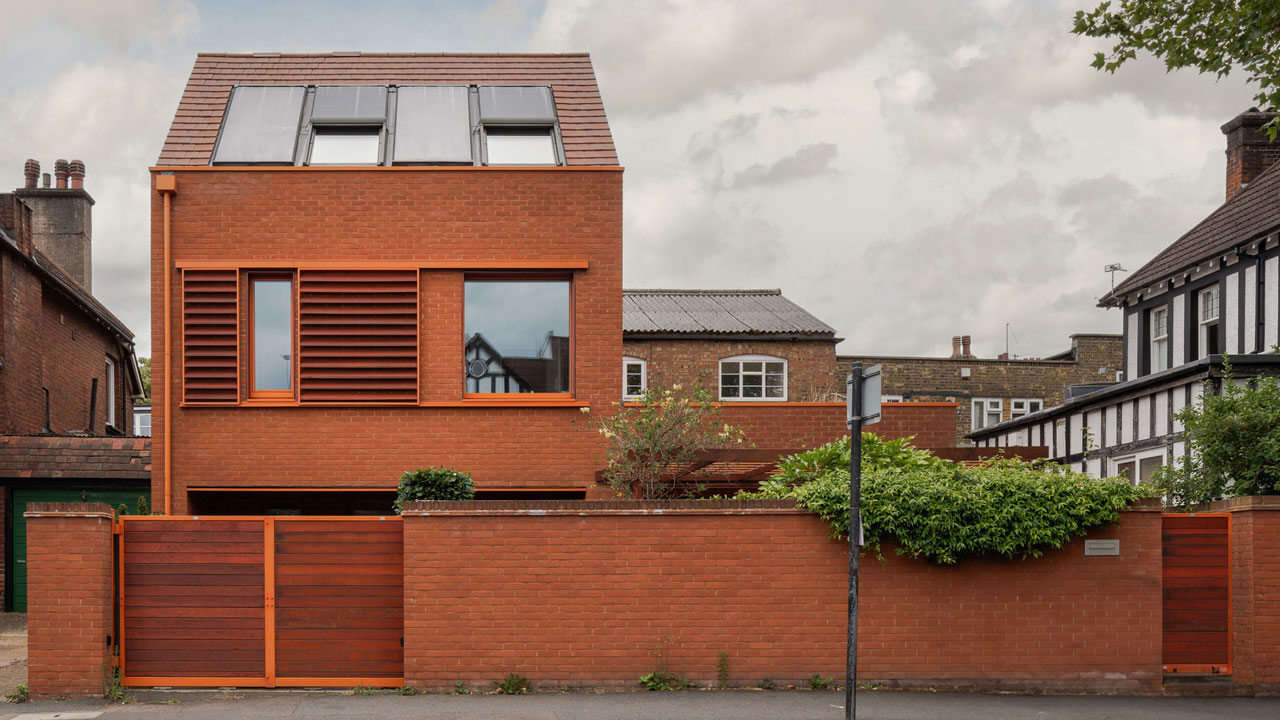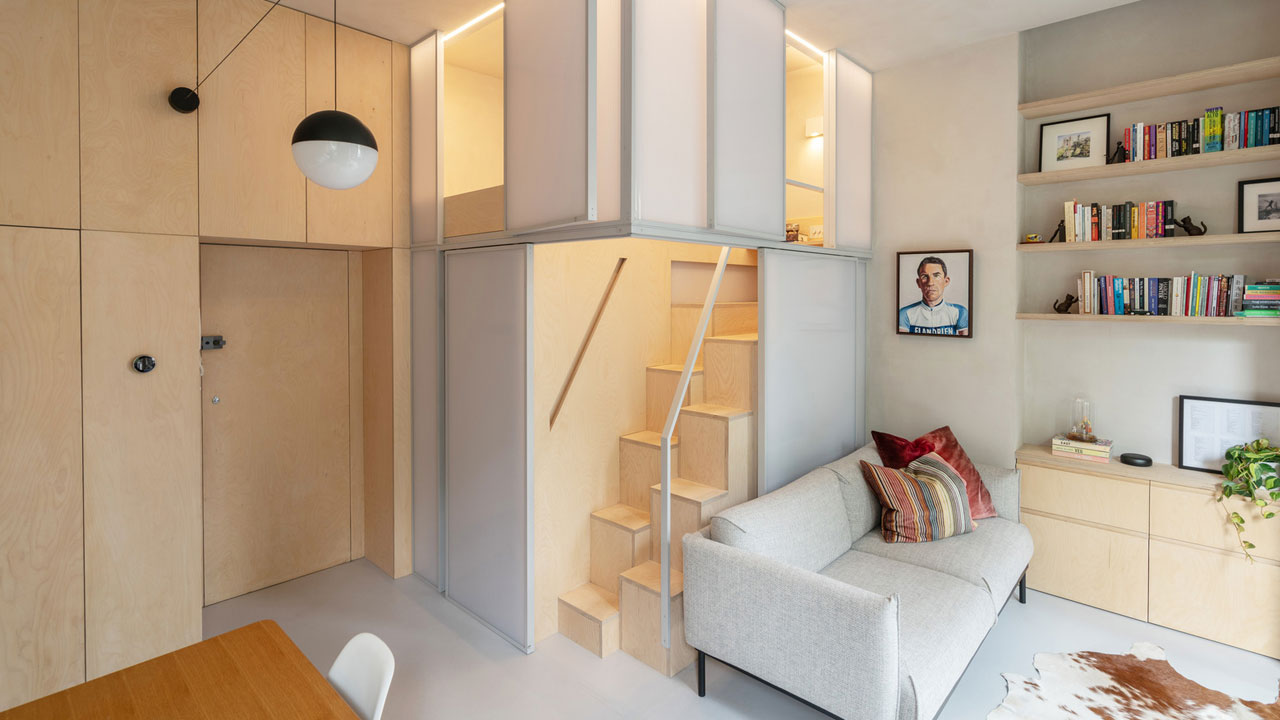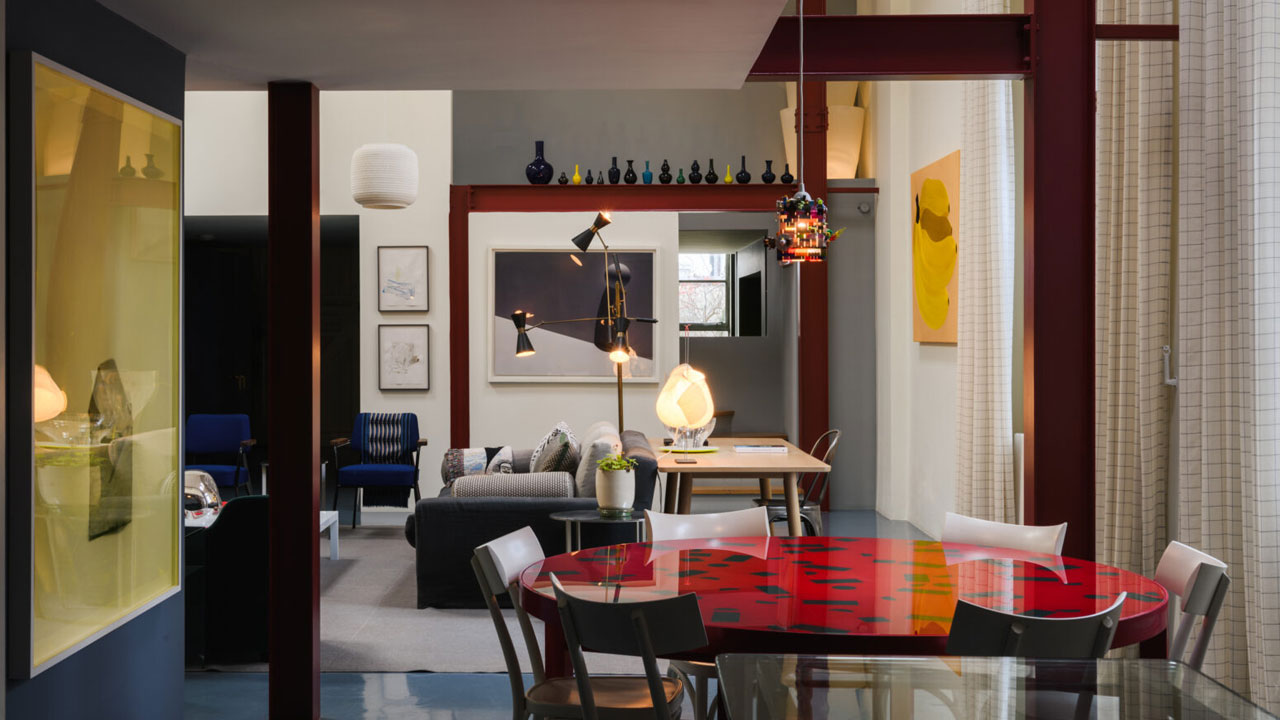Until a few years ago, casting your eye over a home’s Energy Performance Certificate (EPC) was little more than a slightly boring formality. But, with the mounting energy crisis, these somewhat obtuse, multi-coloured charts have started to come into their own. (In fact, we have recently dedicated an entire feature to the efficacy of their design.) During the last census of EPCs, the number of buildings achieving the fabled ‘A’ rating sat at a mind-bogglingly low 0.2%. So, what does it take to excel at efficiency, and which homes are leading the way with low impact architecture, triple glazing and a well-placed heat pump? Here are six of the very best manifestations of eco-efficient design, from a certified Passivhaus to a dramatic barn conversion with a flourishing biophilic garden, all scoring a swotty B+ and above..
Dawson’s Wood, Forest Row, East Sussex
Nestled in Forest Row, a sought-after spot in East Sussex, this outstanding house has a flurry of eco-credentials which made it impossible not to award it an unblemished A Grade EPC. High insulation, mechanical ventilation and solar controlled glazing are just a handful of the eco-friendly touchpoints it ticked off. Built from FSC-certified timber and GGBS concrete (a cement substitute which reduces environmental impact, FYI), the care and attention to sustainability doesn’t stop at the photovoltaic array. A rewilded garden, rainwater harvesting and a green roof ensure the grounds are as virtuous as they are spectacular.
The Bridge House, Bursledon, Hampshire
Eco principles are serious business for architect Peter Huf, who believes a luxurious approach to materiality should not be mutually exclusive to climate-conscious design. His philosophy is fully realised in this house, which acts as a very literal bridge nestled on a lake between two islands. A panoply of triple glazed windows not only creates a dialogue with the surrounding woodland but captures and retains ambient heat so effectively the owners have created an internal greenhouse. Added to this; the electric charging point and the house are both powered by 17kw solar panels, which funnel surplus power back into the grid, securing its coveted A Grade status.
Mill Lane, Kearby, North Yorkshire
The owners of Mill Lane understood that for eco-principles to truly take root they needed to start in the garden. Working with horticulturists Rob Hardy & Co, biophilia – the belief that humans need to be connected to the natural environment – was at the forefront of the planting scheme. Celebrating its location in Yorkshire’s Golden Triangle, the house is surrounded by ferns, hardy shrubbery and evergreens which, as the years pass, will foster biodiversity and marry with the landscape. Inside, despite the abundance of soaring glazing, the heat is masterfully retained and controlled through an air source heat pump. Remarkably for a barn conversion, which often struggle with incorporating eco-efficient methodologies, the newly configured house scored a perfect Grade A EPC.
The Common, East Stour, Dorset
One of the most impressive parts of the EPC B Grade The Common is how it manages to retain an extraordinary amount of heat over its expansive 4120 sq ft footprint. Architects Theo Green Designs ensured a Loxone smart home system was installed during the renovation to tightly control the distribution of the lighting, heating and cooling. Micro-managing energy consumption to this degree, coupled with a Mechanical Ventilation Heat Recovery (MVHR) and air source heat pumps have contributed to this best-in-class example of how to future-proof a home.
Ambleside Avenue, London SW16
There’s a justified buzz about attaining certified Passivhaus status and this new build house in Streatham is one of a rare class of 1,500 homes in the UK to have achieved it. Designed from the ground up by architects PJMA, the Passivhaus characteristics include insulation, airtightness, ventilation and construction using a ‘thermal bridge free’ method, which reduces friction of heat flowing through the building. The result is a blazing burnt orange brick house that has efficiency at its core, with entirely electric energy usage, solar hot water and panels on the roof, automated louvred shutters to control the summer heating and a MVHR unit among several other eco-friendly modifications which have all contributed to its B Grade EPC.
Dairy Row IV, Brundish, Suffolk
Although Dairy Row is a plot, the scope for a potential A Grade EPC is built into its plans, which account for self-regulating temperature controls and augmented insulation. Meticulously designed by RIBA-winning architects Haverstock, the vision for this house introduces eco-efficiency to a pre-existing footprint, set against a backdrop of wildflowers, mature trees and the expansive Suffolk landscape. While it would be wonderful to attain an A Grade for this building, Bs and Cs should not be sniffed at. They indicate excellent energy efficiency at 69% and above, which given the current climate would still put any home in great stead for the future.





